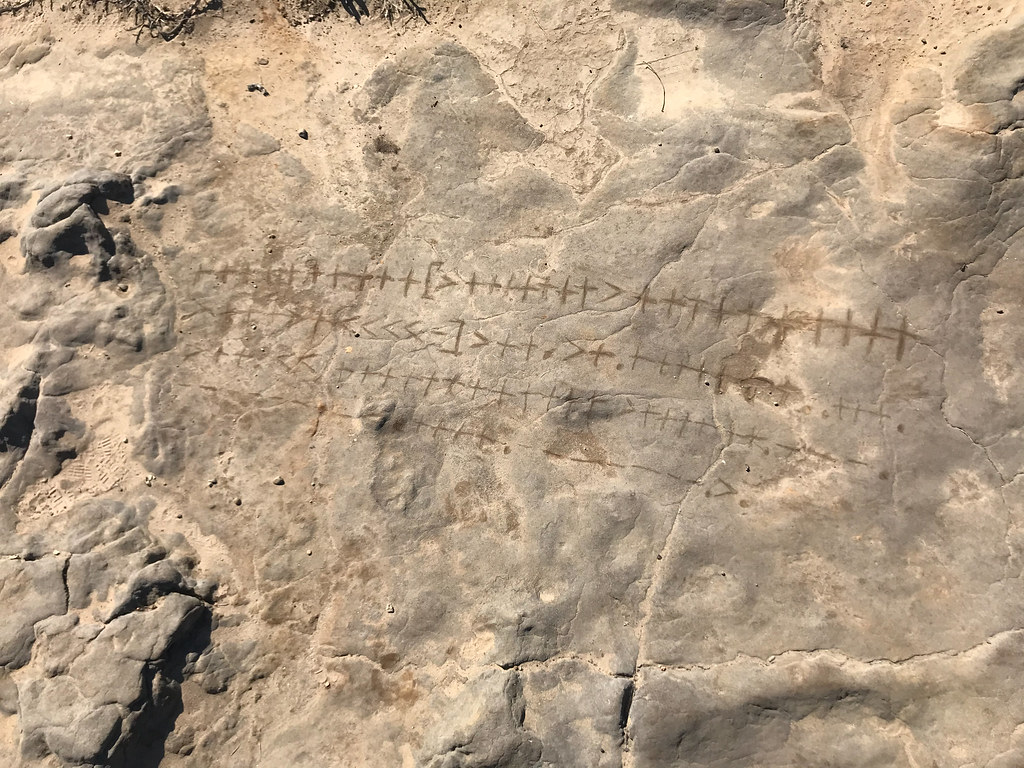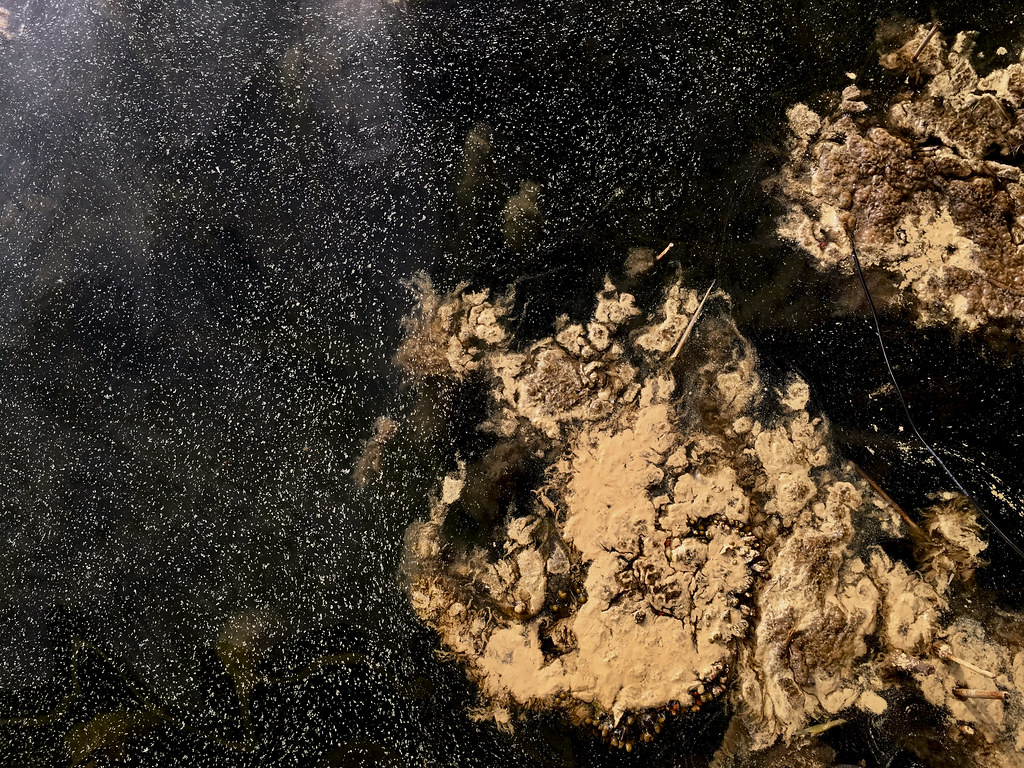Table of Contents
Dark Arts, Grey Areas, and Other Contingencies (CPT.r7)
by Maja Kuzmanovic and Nik Gaffney. FoAM. (They/them/their) Recast1) Harvest Moon 02020 CE.
Pre-press publication for Techniques Journal of the Center for Philosophical Technologies
Scattered in the wind, leaves. “Works,” “Futility,” “Power,” “Interference,” “Art,” “The Star,” “Science,” “Worry,” “Wealth,” “Adjustment” 2). Arcane forces of change, creating contingencies, influencing our lives, affecting our livelihoods. How can we contend with these forces? Can we approach contemporary global economics and daily life in ways symbiotic with techniques from premodern (or paramodern) crafts of magic and ritual3)? Is a rewilding or remaking of techno-materialist methods possible? We may speak of invocation and communing, risk and protection, care and ruin. Dark arts for dark times, capable of transforming “the darkness of the tomb into the darkness of the womb” 4).
Like ceremonial magic, myths, and fairy tales, this text relies on ritual repetition. It is a recasting composed with an amalgamation of words, images, and suggestions from other places and other times. In the words of Gordon White, [. . .] because some things are associated with other things. Symbols recur, patterns repeat, sounds heard on a radio associate with similar outcomes in your life. An Animist universe speaks a language of symbol and synchronicity. To you, to itself, to the birds. This awareness underpins systems of magical correspondence the world over. (2016 a)
OEmbed Error
- All resolution methods failed
Communing with Externalities
With the certainty and stature of court astrologers, economists impose their own language and metaphors, obscuring their sources in the messy materiality of life and outlining economic “benefit” in terms of resources, efficiency, and transactions. How to live and love becomes abstracted, rationalized, and validated as income or expenditure, profit and loss. What can be measured becomes what matters.
What if we consider the economy as a particular belief system? Economic beliefs are usually concerned with methods of allocation, exchange, and ownership. The belief in “markets” as a way of determining “value,” for example. These beliefs are encoded in legal statutes, financial conventions and patterns of behavior. You probably believe that if someone gives you some pieces of paper named “dollars,” you could exchange them with someone else for a cup of coffee. Most of us engage in this most straightforward economic ritual without much thought.
Contemporary economic adepts deal in many other “oblique strategies,” including offshore finance, complex derivatives, or blockchain-based autonomous organizations. There are creative accounting practices with seemingly harmless names like the “Double Irish,” “Dutch Sandwich,” or “Single Malt” (Murphy 2020), created for the sole purpose of transmutation. These occult economic strategies inhabit or create legal and ethical grey areas. Grey Areas where different beliefs about how the world should work overlap, places where they interfere or create gaps. In Grey Areas, fixed rules dissolve into edge cases. They point to flaws in existing systems. They allow economic outliers to emerge from legal limbo. They can be places of deception and manipulation. They can also become temporary refuges for people whose lifestyle may not always conform with consensus reality. People living between monetary and nonmonetary economies. Migrants who fall between the gaps of national tax regimes. Cooperatives or families dispersed across political borders.

By trusting that we can use “money” to support our livelihoods, we become complicit in maintaining an economic belief system reinforced by governments, central banks, and international markets. Yet beliefs can be slippery and abstractions leaky. Effects that are felt “outside” of a market or transaction become ghostly when seen from within, illusions that are neither profit nor loss. Inhabiting the outside, the external, are Externalities. How real, economically, is an oil spill if it doesn’t affect the balance sheet? How do you account for a broken heart? For the relentless productivity of earthworms, bees, or the ionosphere? Externalities haunt economic beliefs with detrimental side effects, unexplained improvements, and unintended consequences (Heller and Starrett 1976). They cast shadows across the shimmering mirage of “business as usual.”
In the Grey Areas, in the shadows, things can take on a life of their own. Technological agents previously concerned with automating the mundane are beginning to make significant decisions on our behalf. Machines are gaining agency as economic actors and becoming increasingly involved in daily life. While we may be relieved to outsource paperwork to an AI or commute in a self-driving car, what are the hidden costs? Which automated systems are acting against our interests? What riddles are we misunderstanding? What sacrifices will need to be made?

In Estonia, for example, there is a growing concern around algorithmic-liability laws. This discussion can easily become too abstract or complicated to follow. So rather than wrapping the issues in techno-legal jargon, the Estonian public administration draws on the language of folk tales. In particular, the kratt (Kaevats 2017). A kratt is a magical creature from stories familiar to many Estonians, usually assembled from household objects by a greedy or lazy protagonist. The protagonist must ask the devil to give the assemblage a soul, and having acquired one, the newly animate kratt will take on any task it’s given.
However (and there is always a “however”), the kratt must be constantly put to work, or it becomes a danger to anyone around it. The stories usually develop around greed and ambition, involving increasingly difficult or seemingly impossible tasks. At some point, the kratt inevitably runs out of productive things to do, and the situation goes spectacularly wrong. Kratts have been known to self-combust, burn down houses, and destroy villages. They almost always ruin their creators’ livelihoods in unexpected ways. The stories warn about hidden costs and ongoing responsibilities. They warn of engaging with entities capable of affecting the world on our behalf.
As more complex technologies and “planetary others” become increasingly entangled in the global economic drift net, new grey areas are certain to emerge. There are current experiments to assist landscapes in becoming cooperatives (e.g., terra0) or to enable rivers to act as legal entities (e.g., Whanganui in Aotearoa). In these grey areas, we could be looking at the birth of an “animist exonomics,” a way of centering things previously seen as externalities. An economics rendered unrecognizable as it incorporates aspects of animism, shamanism, or syncretic practices alongside free markets, rational actors, and steady states. Lines of communication with “other-than-human” sentience. A communion with the multiplicity of worlds and worldviews constantly flickering around us.
Granting Access, Divination, Invocation
In a world enthralled by market economics, existential questions of how “work” can be “financed” are inevitable. Day job? Grants? Commissions? Gambling? Gig economy of the precariat? None of the above? All of the above? Whatever form your personal economy takes, it almost certainly requires engagement with bureaucratic institutions, profit-driven corporations, or entities with motives different to yours. In other words, the communing with nonhuman entities to support your livelihood. Over time, these engagements can almost imperceptibly infiltrate all aspects of your work and life like a plague of zombies or hungry ghosts.
Rather than making sacrifices to the nameless entities demanding continuous economic growth or endless administration (“radical bureaucratization,” as it’s known in wrathful form), can we redraw boundaries? Can we reclaim their tools? (Gibson-Graham and Dombroski 2020) And if so, how do we align these tools with more inclusive ethics and a more expansive aesthetics of generosity?

An economic tool well known to researchers, artists, and entrepreneurs worldwide is fundraising. This often takes the form of grants or investments from one entity to another for a specific, agreed-upon purpose. A Grant can be seen a form of belief (or proposition) made manifest by the necessary agreements, constraints, favors, permissions, access, and authorizations that appear around it.
For those whose livelihoods depend upon fundraising, the entities granting access to resources can, at times, appear to acquire supernatural powers over life and death. Engaging with such powerful, faceless entities was traditionally the domain of dark arts: of magicians, witches, and fortune-tellers. They know that the entities they engage with are not innocuous. They know that communing with these entities has the power to transform lives, livelihoods, and on occasion, reality itself. There is risk, there are dangers, and forms of protection are often essential. There are, of course, similar Entities found in the economic sphere. They can offer the illusion of boundless wealth, and they can bring out the worst in us. Binding them shares many of the dangers of black magic, of possession, of the Left-Hand Path.
So, can tools from the dark arts help protect us? Empower us? Could they help us engage more productively with the bureaucratic and economic strategies deployed around us?

Fundraising shares an easily apparent kinship with magic. Applying for a grant is clearly a form of invocation. In any invocation, the force of intent is directed toward convincing things beyond our control to help with a given predicament. This could equally be divinity, a spirit, a wise ancestor, or a disembodied, many-headed bureaucracy. The purpose of both casting spells and fundraising is essentially the extraction of favors from a fickle yet somewhat predictable universe. We ask for favors because we can’t achieve something on our own, be it unrequited love, gold at the end of the rainbow, or the means to develop a new project.
In fortune-telling and divination, great attention is paid to crafting clear and powerful questions. Know what you are asking for. Understand what’s on the cards. Prepare yourself to be in the right frame of mind. Look for signs, resonances, and synchronicities. Scry the texts shimmering across your screen—mission statements, investment criteria, funding guidelines, prior art (Anon. Zhou). Concentrate your energy in a well-delineated Time and Place. Clearly frame your intent, and begin . . .
When you cross the threshold into the magic circle, commit yourself fully. Focus. Monotask. Like a skilled tarot card reader, use language that is clear and open, suggestive and ambiguous, yet not too vague; language that conveys what you want to say in a way that the listener wants to hear. Summon and commune with the institutional spirit that lies within. Commit yourself to the process. Do your utmost.
Once the act is complete, it is time to ritually close the circle. Pack the paperwork away, banish any residual administrative language. Celebrate. Then let go. Success is never certain. Even the most skilled invocations can lead to unexpected outcomes. Trust that whatever happens will contribute to your liberation and heed the warning that “He who fights with monsters should be careful lest he thereby become a monster. And if thou gaze long into an abyss, the abyss will also gaze into thee” (Nietzsche 1886, 146).

Celebration can involve a simple token of gratitude, a shared moment, or unfold over days at a time. Whether simple or elaborate, intimate or formal, celebrations are important to mark transitions, the crossing of thresholds, and significant events. Celebration binds those involved with a sacred bond, transmuting the intensity of ritual and the ecstasy of the social.
Reenchanting the present
Magical techniques can help discern patterns in complex situations and help find relationships that may not have been apparent otherwise. In looking beyond appearances, it’s essential to understand that any insights gained through these techniques are often subjective and context specific. This is not to say they are without importance or significance (Harvey 2015, Barthes 1957, Bennett 2016, Rosen 1991, etc.5) ). They can provide ways to face the unknown. They can be life changing yet disappear like smoke. They can become tools of liberation or of oppression. They can show the way yet also deceive, mislead, and distract. Their effectiveness relies on the work of the practitioner, on situated knowledge, and setting. Not all techniques “work” in all situations. If results are more easily explained by chance or coincidence, what can the coincidences themselves tell us? What can the tools of probability or statistics help illuminate? What can be learned through repetition, testing, or further experimentation?
When livelihoods are at stake, you cannot always depend on magic alone. A multifaceted approach can improve the odds. Understand the mysteries of accounting and alchemy of feeding the hungry. There is Art in finding tools appropriate for the Work (Lansing 2007, Stengers 2012). Find where strengths lie, be aware of weak points, learn the limits and edges of the structures that you engage with. Methods can exist in superposition, modes and madness and meaning can coexist. Animist worlds, the enchanted world, Material World™️, and the world created in darkness all continue to exist. Every origin myth is true. Every scientific theory is improved by asking to be disproved.
Verify your experiences, challenge your insights. Trust in your abilities, your agency, and (un)common sense. Change can manifest differently when seen from multiple angles. Try using divergent or even conflicting techniques. Engage with magical, scientific, and poetic perspectives. Beware the lure of Divinity Consultants, silver-tongued preachers, Cargo Cults, New Age promises, or charismatic gurus. Seek out the fundamentals, but avoid Fundamentalism. As enchanting as it might sound, “The One True Path” does not exist. The Way Out is through. The way out is The Way In. Don’t be afraid to meander. To stumble, leap, retrace your steps, start again. Reach for a telescope as you reach for the stars. Pay attention to what glistens in the puddles under your feet. Occult techniques mutate. Consider the methods tempered by the fires of rational progress or sharpened by reductionist science. Plastic as an Alchemical byproduct. GPS satellites as astrological entities yet to be charted. What techniques remain reliable after being dragged through times of ruin and destruction and disbelief? What can be salvaged from the disillusionment that remains in material abundance?
“I can’t help but worry,” says Anna Tsing, “when the scrap metal will run out, and whether there will be enough other stuff in the ruins to make continuing survival possible. And while not all of us enact such a literal figuration of living in ruins, we mostly do have to work within our disorientation and distress, to negotiate life in human-damaged environments. Without the singular, forward pulse of progress, the unregularized coordination of salvage is what we have. (Tsing, 2015, 239)

Magic and witchcraft wax and wane, often emerging during times of uncertainty. Reenchantment only becomes necessary after disenchantment. When the present becomes time sacrificed to the future with the bones of history. The world remains hollow, and yet—as witches, magicians, and animists remind us—every thought, every action, no matter how dark or difficult, luminous or frivolous, has the potential to become a reanimating force, an act of caring . . .
An Incantation, a Repetition, a Coda
To care, to cure, to comfort. To be with. To help cope, regardless of the situation.
Allow yourself to be touched by the joys and sorrows of another. To be touched by external circumstances. Thrown off course by the sheer rawness of the moment, by your own inability to make things better, by our fragility, impermanence, and mortality.

We learn to “be with” when looking after a sick child, tending to a garden, or when caring for the dying. Being with a person or a process that you can’t quite understand can be frightening and uncomfortable, yet it can also become an instrument for discernment, a compass for navigating ambivalence. Care first, do later.
Do you care? How do you care? Where do you learn how to care? How can you care for something able to consume you completely?
The space of care exists in parallel to the space of “problems” and “solutions.” Underneath the litany of blame and judgement. Beneath economic systems and ecosystems. Beneath worldviews and opinions. Deep, deep down in a place where words and worlds are intertwined. Where myths and metaphors grow from the direct experience of entangled relationships. Transferred through a touch, a broken bone, a bedtime story.
The patterns of care solidify through repetition. From thoughts to words, from words to actions, from actions to habits, and from habits to character. From a person to a clan to a culture. This process takes time. An instant in mythological time, generations in human time.

This work of care is a struggle with scale and scope and sentience. What does care for a burning forest look like? For an economy in crisis? For the implications of a pandemic? For the migration of humans and other animals? For an out-of-balance microbiome in one’s gut? If we understand the entire material bestiary as some form of sentience, how do we respond to climate change, mass extinction, or speciation? Even if we are not directly responsible for the causes, each of us is responsible for how we live with the consequences. Responsible to and for each other.
Maybe in order to care across spatial and temporal scales—to care for a loved one as much as for melting permafrost, a crumbling economy, or livelihoods of others, whoever they may be—we need something other than the current cultural imaginaries. They could do with queering and straightening, simplifying and complexifying. New stories to live by that are as old as the world. New myths, written otherwise, drawn from ever more diverse mythologies. Perhaps most urgently, we need ways to cultivate our internal landscapes. Activate the unknown. Transform reactions into responses. Rewire our neural pathways. Embody other mindstates. Entangle our grey matter with mycelium and machines for seeing otherwise.
Until we stop taking ourselves so seriously (or not seriously enough). Until our individual identities are shattered and smeared and recongealed innumerable times. Until we understand that we exist because of and despite relating to everything else. Until we understand that we are hydrogen ripped from its context, mixed with the dust of dead stars. That we are endlessly recycled water and crystallizing cyclones. That we are teeming civilizational hosts. Most importantly, that we are capable of care. Care as an antidote to nihilism, greed, or indifference. Care as the potion we take to remember that we are inseparable from all animate matter.
OEmbed Error
- All resolution methods failed
- All resolution methods failed
References
- Barthes, Roland. Mythologies. Translated by Annette Lavers, Hill and Wang, 2006.
- Bennett, Jane. The Enchantment of Modern Life: Attachments, Crossings, and Ethics. Princeton University Press, 2016.
- Crowley, Aleister, and Frieda Harris. Thoth Tarot Deck. Weiser, 1976.
- Federici, Silvia. Caliban and the Witch. Autonomedia ; Pluto, distributor], 2004.
- FoAM. “Dark Arts, Grey Areas and Other Contingencies.(MED.r3)” Medium, 8 July 2019,
- FoAM. “Terrafictions. (TER.r4)” Medium, 2 Oct. 2018,
- Gibson-Graham, J. K., and Kelly Dombroski, editors. The Handbook of Diverse Economies. Edward Elgar Publishing, 2020.
- Harvey, Graham. The Handbook of Contemporary Animism. Routledge, 2015.
- Heller, Walter P., and David A. Starrett. “On the Nature of Externalities.” Theory and Measurement of Economic Externalities, Elsevier, 1976, pp. 9–27. doi:10.1016/B978–0-12–450450–9.50008–7.
- “Innovative Bill Protects Whanganui River with Legal Personhood.” New Zealand Parliament, 28 Mar. 2017,
- Kaur, Valarie. Is This the Darkness of the Tomb—or the Darkness of the Womb? YouTube. 2017, https://www.youtube.com/watch?v=-2uv6–2FVhA
- Kaevats, Marten. “Estonia Considers a ’kratt Law’ to Legalise Artificial Intelligence (AI).” Medium, 26 Sept. 2017, https://medium.com/e-residency-blog/estonia-starts-public-discussion-legalising-ai-166cb8e34596
- Lansing, John Stephen. Priests and Programmers: Technologies of Power in the Engineered Landscape of Bali. Princeton University Press, 2007.
- Murphy, Chris B. “How To Use the Double Irish With A Dutch Sandwich to Reduce Taxes.” Investopedia, 8 Mar. 2020, https://www.investopedia.com/terms/d/double-irish-with-a-dutch-sandwich.asp
- Nietzsche, Friedrich. Beyond Good and Evil. 1886. Translated by Helen Zimmern. Project Gutenberg, 2009, https://www.gutenberg.org/ebooks/4363
- Piccini, Angela, and Kate Rich, editors. RADMIN Reader 2020. (RAD.r2), Feral Business Research Network, 2020, https://fo.am/documents/59/RADMIN_READER_2020.pdf
- Rosen, Robert. Life Itself: A Comprehensive Inquiry into the Nature, Origin, and Fabrication of Life. Columbia Univ. Press, 1991.
- Sarnet, Rainer, director. November. 2017; Oscilloscope Laboratories, 2018.
- Scott, James C. Seeing Like a State: How Certain Schemes to Improve the Human Condition Have Failed.
- Solnit, Rebecca. Hope in the Dark: Untold Histories, Wild Possibilities. Third edition, Haymarket Books, 2016.
- Stengers, Isabelle. “Reclaiming Animism.” E-Flux, no. 36, 2012,
- Stengers, Isabelle, and Phillipe Pignarre. Capitalist Sorcery: Breaking the Spell. Translated by Andrew Goffey, Palgrave Macmillan, 2012.
- terra0. https://www.terra0.org/ Accessed 2 Sept. 2020.
- Crowley, Aleister (as The Master Therion) The Book of Thoth: A Short Essay on the Tarot of the Egyptians, Being the Equinox. Weiser, 1974.
- Tsing, Anna Lowenhaupt. The Mushroom at the End of the World: On the Possibility of Life in Capitalist Ruins. Princeton University Press, 2015.
- White, Gordon. Pieces of Eight: Chaos Magic Essays and Enchantments. Kindle Edition, ASIN B01J9REBIQ, 2016.
- White, Gordon. The Chaos Protocols: Magical Techniques for Navigating the New Economic Reality. Llewellyn Publications, 2016.
- Wilhelm, Richard, and Cary F. Baynes, translators. The I Ching: Or Book of Changes. Zhou dynasty. 3rd ed, Routledge & K. Paul, 1968.
